Handboek – Hoe te kopen
Guides To Buy
Choosing An HeadAmp
It’s that simple
Okay, so you want to get better sound, and you need an amp. The problem is, we have a whole bunch of them! And there are tubes and solid state, and high powered options to choose from. So, how do you pick the best amp for your headphones? Well, let’s boil it down by model:
Magni 3+ and Heresey . When we say “this may be the only headphone amp you ever need,” we really mean it. Magni will drive pretty much any hard-to-drive headphone out there, with 2.4 watts of power into 32 ohms, while being dead-silent with sensitive in-ear monitors.
Choose Magni for:
Most bang for the buck
Most headphones, from IEMs to planars
A complete desktop system with preamp outputs
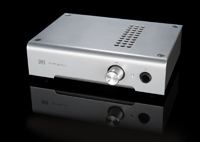
Vali 2, . Want to get a taste of great tube sound, without the wallet-exploding price? Vali’s for you. It’s a very serious tubeamp, with a class-leading power supply, low noise for efficient headphones, and high power output for hard-to-drive headphones.
Choose Vali for:
Great tube sound, at a very low cost
The ability to “tube roll” and change the sound
Most headphones, from IEMs to planars
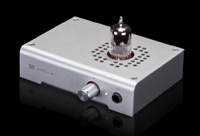
Asgard 2,. This is a pretty big step up from the Magni in terms of performance and functionality. Asgard 2 adds a gain switch, for better compatibility with earbuds and IEMs, and variable preamp outs so you can connect it to a set of desktop powered monitors, or a speaker amp.
Choose Asgard 2 for:
Exceptional resolution and performance
A complete desktop control center
Most headphones, from sensitive IEMs to planars
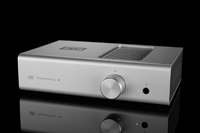
Valhalla 2,. Now we get into tubes, and the old arguments about whether tubes sound better or not. We don’t get into those arguments. We will say that tubes sound different. Some people like tubes, and some people don’t. Valhalla 2 is a great tube amp that works very well with a wide range of headphones.
Choose Valhalla for:
Exceptionally accurate tube sound
A complete desktop control center
High-impedance and low-impedance, high-sensitivity headphones
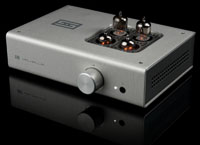
Lyr 2, . More tubes, this time with very high power output thanks to a hybrid design. Lyr 2 gives you more power than virtually any headphone needs, and is quite versatile for a wide variety of headphones.
Choose Lyr for:
Exceptional power and headroom
A complete desktop control center
A wide range of headphones, including very hard to drive orthodynamics
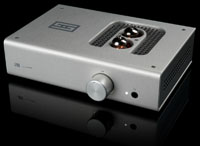
Mjolnir 2, . Mjolnir is a specialist amp. It gives true end-game performance that equals or exceeds amps costing far more—at the price of being only balanced. If you don’t have balanced headphones, don’t bother with Mjolnir. However, in systems using top-end balanced headphones, Mjolnir provides the highest level of dynamics, detail, resolution, and accuracy.
Choose Mjolnir for:
Exceptional power and headroom
Exceptional detail and resolution
Balanced, top-tier headphones
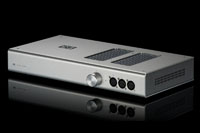
Ragnarok. Ragnarok is a do-all integrated amp for headphones and speakers, providing the ultimate end-gameperformance for both. Compare to any amp on the market, at any price. With 5 inputs, balanced and single-ended headphone outputs, balanced and single-ended preamp outputs, and speaker terminals, it’s one amp that is suitable for pretty much anything.
Choose Ragnarok for:
Ultimate detail, resolution, and accuracy
Ultimate power and headroom for headphones and for many speakers
Balanced and single-ended headphones and speakers
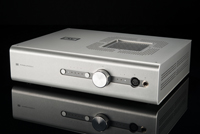
Choosing a DAC
Bits is bits, right?
Okay, so you want a DAC. Or do you? Some people say you don’t need one. Well, if you trust the overworked computer or smartphone engineer to choose the right $0.25 D/A for their platform swimming in gigahertz noise, sure. So yeah, you need an external DAC for top sound. But which one? Let’s boil it down by model:
Modi 3 and Modi Multibit. Modi 3 is the three-input, do-all DAC that may be all the DAC you ever need—for a 2-figure price tag. There’s also Modi Multibit, featuring our unique True Multibit™architecture and DSP-based digital filter.
Choose Modi for:
Most bang for the buck
Easy setup and great flexibility
Lowest cost Multibit option
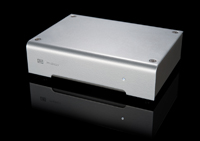
Loki. Loki is a standalone, pure DSD DAC. If you don’t know what DSD is, it’s probably not for you. If you’re really excited about DSD, this is a great way to add DSD playback capability to any DAC, thanks to Loki’s integrated switching system. Alternately, you can use JRiver to convert all your PCM to DSD on the fly and use Loki as your only DAC.
Choose Loki for:
Pure DSD playback with no conversion to PCM
Adding DSD playback capability to any DAC
Systems where you’re converting all your PCM to DSD in software
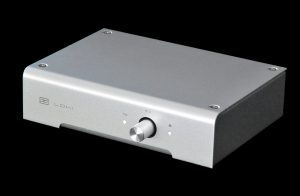
Bifrost and Bifrost Multibit. Where Modi is about bang for the buck, Bifrost is a complete platform—an upgradable platform that you can use for many, many years in the future. And, Bifrost is available as either a delta-sigma or multibit DAC, for even more flexibility.
Choose Bifrost for:
Exceptional performance and flexibility
Multiple inputs: optical, coaxial, and USB
Assurance of upgradability in the future
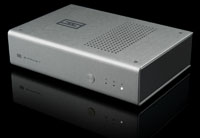
Gungnir and Gungnir multibit.
Available in both Gungnir Multibit and standard Gungnir configurations. Gungnir Multibit offers the same digital filter and similar DACs as Yggdrasil, while both models have Adapticlock regeneration, the most sophisticated clock regeneration scheme in the industry.
Choose Gungnir for:
Excellent performance in both balanced and single-ended systems
Multiple inputs: optical, coaxial, BNC, and USB
Assurance of upgradability in the future
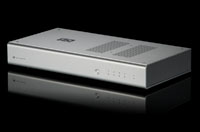
Yggdrasil. Yggdrasil is a complete re-thinking of what an “end game” DAC should be. As a true multi-bit DAC with a unique digital filter algorithm using D/A converters not used in any other product, it is truly like nothing else out there. It is designed to provide optimal performance for the vast majority of music you already own, without the need for repurchasing everything in exotic formats. Like all of our DACs, Yggdrasil is completely modular and upgradable to meet future needs.
Choose Yggdrasil for:
Ultimate performance in both balanced and single-ended systems
Multiple inputs: USB, AES/EBU, optical, coaxial, and BNC
Assurance of upgradability in the future
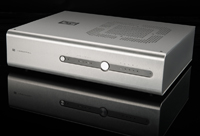
Choosing a DAC/AMP
Fulla 2. We don’t call this “the 2-figure, do-all desktop” for nothing. Fulla 2 plugs into virtually any computer and drives most headphones with ease. It also provides a preamp output (variable), a fixed DAC output, and an analog input so you can use it as just an amp.
Choose Fulla 2 for:
Smallest size
Most bang for the buck
Most headphones
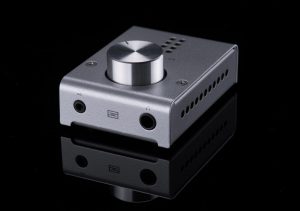
Jotunheim with DAC or Phono Input. Jotunheim is a fully balanced amp that works perfectly with pretty much any headphone—balanced, single-ended, IEM, planar, whatever. Plus, it can be customized with a Multibit DAC, Dual AK4490 DAC, or MM phono preamp.
Choose Jotunheim for:
End-game performance for both balanced and single-ended sources and headphones
Tons of power and a very low noise floor, ideal for any headphone
No obsolescence—modular and upgradable for the future
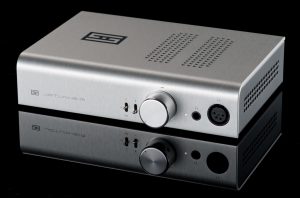
Lyr 3. with DAC or Phono Input. Lyr 3 combines a powerful headamp with one of two optional DACs—Multibit or dual AK4490, or MM phono preamp. Featuring our Coherence™ tube hybrid topology and Continuity™ constant transconductance output stage, Lyr 3 is an exceptional do-all desktop combo.
Choose Lyr 3 for:
End-game performance for a wide range of headphones, from IEMs to planars
Full power on tap through single-ended output and exceptional sound quality
No obsolescence—modular and upgradable for the future
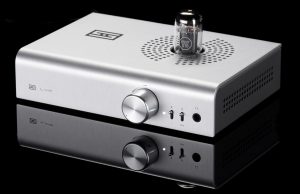
Stack. If you’re looking for something different—tubes, multibit DACs, etc, you can also create your own system by choosing a separate amp and DAC from our broad line and stacking them on top of each other. Fair warning: at the top end, the stacks are big and not exactly desk-friendly!
Choose a Stack for:
Ultimate in flexibility to mix and match
Advanced needs, such as tube gain or multibit DACs
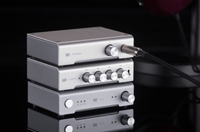
Choosing a AMP & Preamps
Saga This may be the only preamp you ever need. This no-compromises preamp offers a perfectly balanced 64-step relay volume and both passive and tube buffer output options, as well as a remote control.
Choose Saga for:
Most preamp bang for the buck (maybe on the planet)
Use with a single Vidar to drive almost any set of loudspeakers
Integration with home theater via true bypass capability
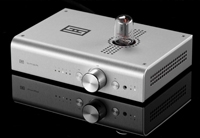
Freya Here’s your 4-tube, end-game preamp, without the 4 or 5 figure price. With a perfectly balanced 128-step relay volume, Schiit Freya
passive and solid state buffer options, and full remote control with a machined aluminum remote, Freya is a stunning value.
Choose Freya for:
Ultimate flexibility in terms of inputs, outputs, and modes
Use with 2 Vidars in mono configuration (or one Vidar, or virtually any other amp)
Integration with home theater via true bypass capability
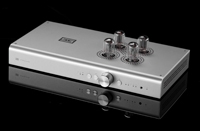
Vidar Here’s the one amp you need–capable of driving virtually any pair of speakers out there with power and authority,
and without the “Class D” and “switching supply” compromises you usually see at this price.
Choose Freya and 2 Vidars for:
Exceptional power, headroom, and flexibility
The highest performance speaker-driving system from Schiit
Perfect match to Gungnir Multibit in size, Yggdrasil in width
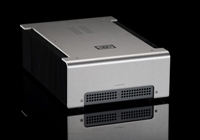
Saga and Vidar In our opinion, this is where everyone should start. Combine Saga and Vidar, and you have an amazingly
capable, transparent, no-compromise system for just over a grand. Add any of our DACs for a complete “stack.”
Choose Saga and Vidar for:
An affordable, no-compromise, remote-control speaker-driving system
The highest value to performance ratio
Perfect match to Bifrost or Bifrost Multibit in size
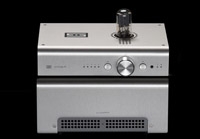
Freya and 2 Vidars Now you’re getting into serious capability, with Freya and 2 Vidars run in mono, for 400W per channel.
This system is serious overkill, but sometimes there’s no dose like an overdose!
Choose Saga and Vidar for:
An affordable, no-compromise, remote-control speaker-driving system
The highest value to performance ratio
Perfect match to Bifrost or Bifrost Multibi
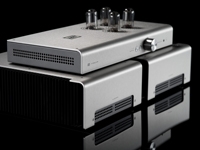
Ragnarok Want to simplify your life? Ragnarok combines both preamp and amp into a single box—and throws in balanced and single-ended headphone outputs and preamp outs as well. It’s the one box you need to do pretty much anything.
Choose Ragnarok for:
Single-box simplicity
Speaker and headphone integration
Perfect match to Yggdrasil in size
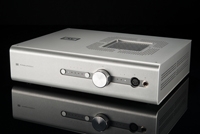
Getting Connected
How to connect our gear to most common devices
Okay, so you’re new to this whole game. You don’t know an LOD from a 30-pin, or what a USB A-B cable is. Where the heck do you start? Well, here’s a brief guide to how to connect our stuff to some common sources and systems, together with some links to cables you might need.
Connecting to a Computer
Analog: You can connect a headphone amp to your computer via the headphone or line-out jack. Most computers have a 1/8″ stereo jack, and our gear uses RCA inputs, So you’ll need a cable like this one:
Digital: You can connect our DACs to Windows, Mac, many Linux computers, and some Chromebooks via USB, optical, or coaxial digital output, depending on what the computer has. USB is the most universal. To use USB, you’ll need a USB A-B cable, like this:
Most Apple computers also have optical digital output via the headphone jack. To use it, you’ll need a cable like this:
1/8″ to Standard Toslink Cable
Connecting to an iPod/iPhone/iPad
Analog: You can connect a headphone amp via the headphone jack. iPhones and iPods use a 1/8″ stereo jack, and our gear uses RCA inputs, so you’ll need a cable like this one:
Digital: If you have an older iPhone, iPod, or iPad with the 30-pin connector (the 1″ wide one, not the new Lightning connector), you can connect to our optical-input DACs with a digital out dock, like a Pure i20.
30-Pin connector and iPad: If you have an iPad with the 30-pin connector, you can connect via USB with the Apple 30-pin Camera Connection Kit, together with a powered hub to avoid the “this device draws too much power” error. You’ll also need a USB cable.
Lightning connector: if you have an iPhone running iOS7 or iPad running iOS6 or iOS7 with the new Lightning connector, you can use the Lightning to USB Adapter from Apple, together with a powered hub to avoid the “this device draws too much power” error. You’ll also need a USB cable.
Apple 30-pin Camera Connection Kit
Apple Lightning to USB Adapter
Connecting to an Android Phone or Tablet
Analog: You can connect a headphone amp via the headphone jack. iPads use a 1/8″ stereo jack, and our gear uses RCA inputs, So you’ll need a cable like this one:
Digital: You can connect our DACs to many Android devices (4.0 and up) using a USB On The Go cable and output digital music via the Audio Player Pro app, with USB Tweak 1 applied. Some Android devices will need to be connected through a USB powered hub, since they cannot supply enough power to run the DAC.
Audio Player Pro App (this is a paid app, it costs about $10)
Powered Hub (for some systems)
Connecting a DAC to an Amp, Preamp, AV Preamp, or Receiver
Most equipment uses RCA cables. You’ll need a stereo pair of RCA cables—we sell really short ones (PYST) for connecting our own gear together when it’s stacked—or you can buy all kinds of lengths at the second length.
Connecting a Preamp to a Headphone Amp
Many preamps still have what they call a “tape out,” which bypasses the internal volume control of the preamp. This is where you’d want to connect a headphone amp. All you need is a pair of RCA cables, like these:
If your preamp does not have a clearly labeled “tape out,” contact the manufacturer and ask them if they have an output that bypasses the volume control.
Connecting a Receiver or AV Preamp to a Headphone Amp
Many receivers and AV preamps have what they call a “stereo mix” output. This is where you’d connect a headphone amp, with RCA cables like this:
If your receiver or AV preamp does not have a clearly labeled stereo output, contact the manufacturer for their recommendation as to where to connect a headphone amp.
Connecting to More Than One Device
Let’s say you have one of our DACs and you want to connect it to both your headphone amp and a set of powered speakers on your desk (or any other group of two different products, like a headphone amp and a receiver, etc. To do this, you’ll need a set of RCA Y-Cables, like this:



